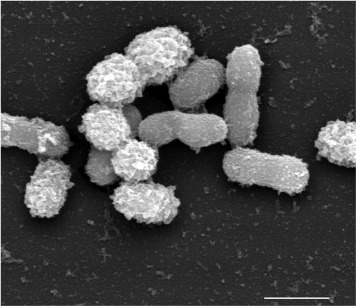
Akkermansia massiliensis
Human intestinal probiotics, the new darling of precision nutrition supplementation and biomedicine
Next Generation Probiotics: Akkermansia
-Human intestinal probiotics, the new darling of precision nutrition supplementation and biomedicine
In 2004, researchers Muriel Derrien et al. from the Microbiology Laboratory at Wageningen University in the Netherlands identified a new mucus-degrading bacterium from human feces: Akkermansia muciniphila, or “Akk” for short. It was named after Dr. Antoon D.L.Akkermans (1941-2006), a famous microbial ecologist from Wageningen.
Akkermansia is an oval-shaped Gram-negative bacterium that is a permanent resident of the human intestine, accounting for 3-5% of the human microbiome. It can grow in the intestinal mucus layer and use mucin secreted by the host as a "feed", thereby colonizing the intestine and protecting the intestine from pathogens through competitive exclusion.
Although Akkermansia uses mucin as an energy source, a large number of observations have confirmed that Akkermansia has a positive regulatory effect on the thickness of the intestinal mucus layer and intestinal barrier integrity.
Akkermansia is not a single species. It is outdated to equate Akkermansia muciniphila with the entire Akkermansia species.
Recent studies: Systematic genomic analysis of 367 high-quality Akkermansia isolates and metagenomic assembly genomes showed that there are at least 25 Akkermansia species at the genome level. Among them, Akkermansia massiliensis is the most common Akkermansia species in the human intestine and plays a vital role in human intestinal health.
Feronia has developed Akkermansia massiliensis together with our partner Biodep and has completed some animal experiments and clinical trials.
Anti-aging mechanism of Akkermansia massiliensis LTA21F2
Through the analysis of our animal experimental results, the weight of brain tissue of naturally aged mice treated with Akkermansia massiliensis LTA21F2 strain increased significantly, which indicates that the strain has the potential to avoid brain tissue atrophy caused by aging, which also helps to improve their cognitive and memory abilities. In addition, Akkermansia massiliensis LTA21F2 strain also significantly increased the weight of the intestine of naturally aged mice, indicating that Akkermansia massiliensis LTA21F2 participated in resolving intestinal damage caused by aging. The open field test showed that Akk group mice were able to enter the center more frequently than 0ld group mice, while 0ld group mice walked along the edge of the open area and did not enter the central area (Figure 1a). Compared with the 0ld group, the total distance traveled in the open area by the AKK group was farther. It shows that Akkermansia massiliensis LTA21F2 bacteria can effectively alleviate the decline in the activity of mice caused by aging, and at the same time can reduce their anxiety level and stabilize their mentality. The results of the water maze test showed that mice in the AKK group could reach the platform quickly, while mice in the 0ld group still found it difficult to find the platform in the water maze, indicating that the intervention of Akkermansia massiliensis LTA21F2 bacteria has the effect of significantly alleviating the cognitive and memory decline of aging mice.
From the perspective of brain tissue sections, the pyramidal cells in the CA3 region of the hippocampus of mice in the natural aging group were arranged loosely and disorderly, with unclear layers, and significantly fewer pyramidal cells; while the pyramidal cells in the CA3 region of the hippocampus of the Akkermansia massiliensis LTA21F2 strain group were arranged neatly, with complete cell morphology and structure, clear boundaries, and rare nuclear condensation. The pyramidal cells had 8-9 layers, which was more than the 5-6 layers in the aging group. The liver of the naturally aged mice had been damaged, and the biochemical indicators showed an increase in aspartate aminotransferase, while the intervention of the Akkermansia massiliensis LTA21F2 strain helped the liver indicators to return to normal functional levels. The increase in urea nitrogen indicates impaired renal function, which was significantly improved after the intervention of the Akkermansia massiliensis LTA21F2 strain.
Compared with the AKK group, the Old group had significantly shorter colon length, fewer goblet cells, and less colonic mucus. At the phylum level, the intestinal flora of the two groups of samples was most abundant in the Bacteroidetes, Firmicutes, and Proteobacteria. It is worth noting that compared with the Old group, AKK intervention led to an increase in the ratio of Firmicutes to Bacteroidetes (F/B), while the relative abundance of Proteobacteria decreased significantly by 102.21%, and the relative abundance of Verrucomicrobia increased significantly by 100.00% (Note that AKK bacteria belong to this phylum).
In another clinical trial, we selected elderly volunteers with an average age of 62 years old and at risk of cardiovascular disease or metabolic syndrome and asked them to take 2 grams of AKK-LTA21F2 (200 billion AFU) daily for three weeks. The clinical results will be published soon.


